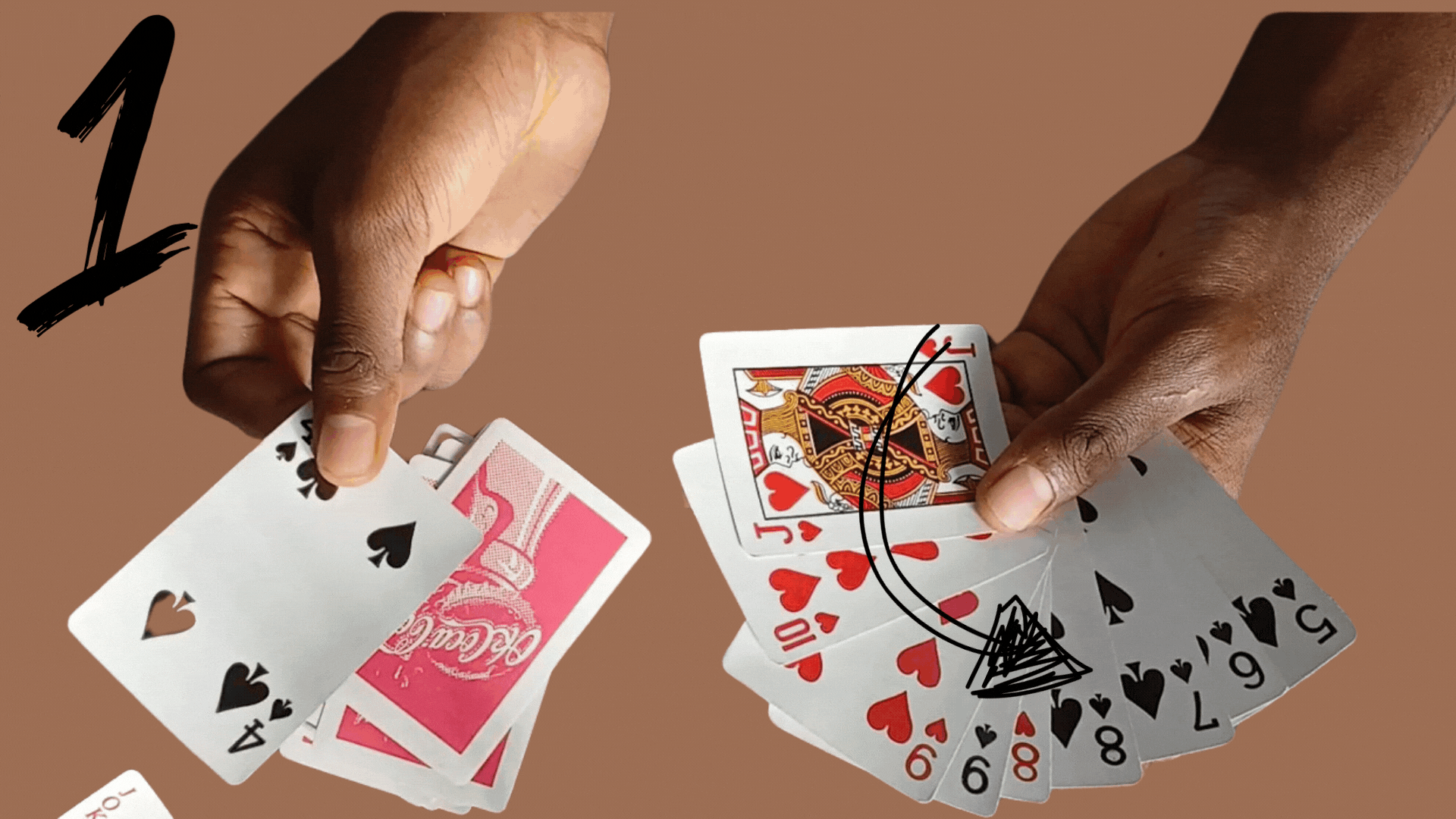Note
Insertion sort is very natural to think about. If I give you a bunch of cards to sort you are probably using Insertion sort You start by having one card on you left hard when you encounter a new card depending if it is greater of less than the card you have on your left hand you put it left of it or right of it. Every time you draw a card you insert it to the right place on your left hand.
It’s inspired by the way we often sort cards in our hands: you take one card at a time and insert it into its correct position among the cards you’ve already sorted.
-
Start from the First Element
Treat the first element as a “sorted” section (since a single element is trivially sorted). Now, move to the next element.
-
Insert Each New Element into Its Correct Position
For each new element (let’s call it the “key”), compare it to the elements in the “sorted” section (elements to its left).Shift all elements that are greater than the key one position to the right, making space for the key. Insert the key into its correct position in the sorted section.
-
Repeat for All Elements
Move to the next element and repeat the insertion process until all elements are sorted.
In this example the card I have on my left hand are sorted when we draw the next card we ask our self which is the right place for it and put it there
 |  |  |
|---|---|---|
 |  |  |
 |  |
You repeat this until there are no card unsorted card on the right
Lets see how Insertion sort is done in code
function insertionSort(arr:number[]):number[]{
// For every item you draw
for(let i=1;i<arr.length;i++){ // we start from 2nd element
// Loop through the items and find it's place
const currentCard = arr[i]
let currentIndex = i
for (let j = i - 1; j >= 0; j--) { // check sorted
if (arr[j] > currentCard) {
this.swap(arr, j, currentIndex)
currentIndex = j // it swaped with j
}
}
}
return arr
}
function swap(arr: number[], i: number, j: number): void {
let temp = arr[i];
arr[i] = arr[j];
arr[j] = temp;
}Another thing I want to talk about in insertion sort is direction
does sorting direction matter?
The sort answer is yes. Lets say you are assigned to sort the buying power of Ethiopian birr in the last decade. We can know that it’s mostly declining.In this case I can argue that choosing insertion sort is better and faster.The data you have been give is predictable and going in one direction.But don’t rush and just use the previous formula we talked about because as we talked you are getting mostly low value and low value are found on the left hand side not on the right hand side. So maneuvering the card to the right place takes time.
- let me show you pictorially

 |  |  |  |
|---|---|---|---|
 |  |  |  |
 |  |
But if you know it’s mostly low values you can just reverse the direction you are sorting to check from the left side to right.If we have checked from starting 5 we would have got the right place for 4 easily.
Using generator function I have talked about it in bubble-sort and generatorFunction
Here is the end code for it.Implementing this by changing direction for sorting is left as an exercise for the reader.
interface returnType {
arr: number[]
swapped: boolean
highlightIndex: { i: number, j: number }
}
function insertionSort(arr: number[]): Iterator<returnType> {
if (arr.length < 2) // already sorted case
return { arr, highlightIndex: {i:-1,j:-1}, swaped: false }
for (let i = 1; i < arr.length; i++) {
const currentCard = arr[i]
let currentIndex = i
for (let j = i - 1; j >= 0; j--) { // check sorted cards
const currentSortCard = arr[j]
if (currentSortCard > currentCard) {
this.swap(arr, j, currentIndex)
currentIndex = j // it swapped with j
yield { arr, highlightIndex: {i,j}, swaped: true }
}
else { // it is in the right spot
yield { arr, highlightIndex: {i,j}, swaped: false }
break
}
}
}
yield { arr, highlightIndex: {i:-1,j:-1}, swaped: false }
}
function swap(arr: number[], i: number, j: number) {
let temp = arr[i]
arr[i] = arr[j]
arr[j] = temp
}